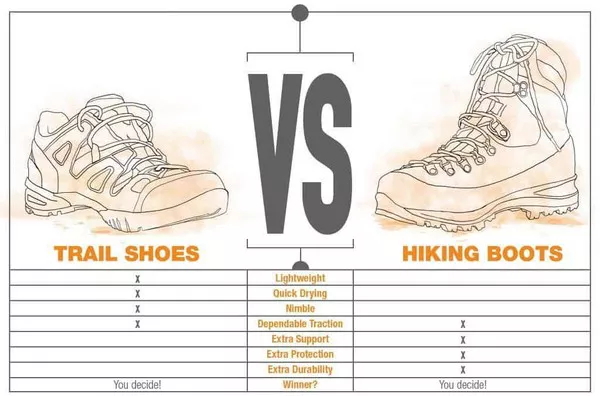When it comes to outdoor adventures, the right footwear can make all the difference between an enjoyable experience and a painful ordeal. Hiking and trekking are two popular activities that require specific types of shoes designed to provide comfort, support, and protection on different terrains. While the terms “hiking” and “trekking” are often used interchangeably, they actually refer to distinct activities with their own unique requirements. In this article, we’ll delve into the differences between hiking and trekking shoes, helping you choose the right footwear for your next outdoor excursion.
Understanding the Activities
Before diving into the specifics of footwear, it’s important to understand the activities of hiking and trekking. While both involve walking in natural environments, there are notable differences in terms of intensity, duration, and terrain.
Hiking typically refers to leisurely walks along well-marked trails, often lasting for a few hours or a full day. Hiking trails can vary in difficulty, ranging from easy paths through flat terrain to more challenging routes with steep ascents and descents.
On the other hand, trekking involves longer, multi-day journeys through remote and rugged landscapes. Treks often require carrying heavy backpacks containing supplies for overnight camping, and participants may encounter diverse terrain, including mountains, forests, and rocky terrain.
Key Differences in Terrain and Conditions
The primary difference between hiking and trekking shoes lies in the terrain and conditions they are designed to handle. Hiking shoes are typically suitable for relatively tame trails with moderate inclines and even surfaces. They provide adequate support and protection for short to moderate distances and are ideal for day hikes or casual outdoor activities.
In contrast, trekking shoes are built to withstand more demanding conditions encountered during extended journeys in challenging terrain. They offer superior durability, stability, and traction, making them suitable for traversing rocky paths, crossing streams, and navigating unpredictable landscapes.
Design and Construction
Hiking and trekking shoes differ in their design and construction to accommodate the specific needs of each activity. Hiking shoes are often lightweight and flexible, with a focus on comfort and breathability. They may feature a low-cut design for increased mobility and ventilation, along with cushioning in the midsole for shock absorption.
Trekking shoes, on the other hand, tend to be more robust and supportive to handle the rigors of extended trekking adventures. They often have a higher ankle collar to provide stability and protection against ankle injuries, as well as a reinforced toe cap and rand for added durability and protection from rocks and debris.
Additionally, trekking shoes may incorporate advanced features such as waterproof membranes and aggressive lug patterns on the outsole for enhanced grip on varied terrain. These features help ensure that trekkers can tackle a wide range of conditions while maintaining comfort and performance.
Support and Stability
Support and stability are crucial factors to consider when choosing between hiking and trekking shoes. Hiking shoes typically offer adequate support for shorter outings on well-maintained trails but may lack the stability needed for long-distance trekking over rough terrain.
Trekking shoes are specifically designed to provide superior support and stability, especially when carrying heavy loads over uneven ground. The higher ankle collar and firmer construction help prevent ankle rolls and provide additional support for the foot and ankle, reducing the risk of fatigue and injury during long treks.
Choosing the Right Footwear
When selecting footwear for your outdoor adventures, it’s essential to consider the specific demands of your chosen activity. Here are some key factors to keep in mind:
1. Terrain: Assess the type of terrain you’ll be encountering, including the presence of rocks, roots, mud, and water crossings.
2. Duration: Consider the length of your hike or trek, as well as whether you’ll be carrying a backpack and camping gear.
3. Weather: Take into account the weather conditions you’re likely to encounter, including temperature, precipitation, and humidity.
4. Fit and Comfort: Ensure that the shoes fit properly and feel comfortable from the moment you put them on. Remember to wear appropriate socks to prevent blisters and hot spots.
5. Durability: Choose shoes made from high-quality materials that can withstand the demands of your chosen activity and provide long-lasting performance.
Conclusion
By carefully evaluating these factors and selecting the right footwear, you can enhance your outdoor experience and enjoy greater comfort, support, and protection on the trails. Whether you’re embarking on a leisurely hike or an epic trekking adventure, investing in the appropriate shoes is essential for staying safe and comfortable in thegreat outdoors.

